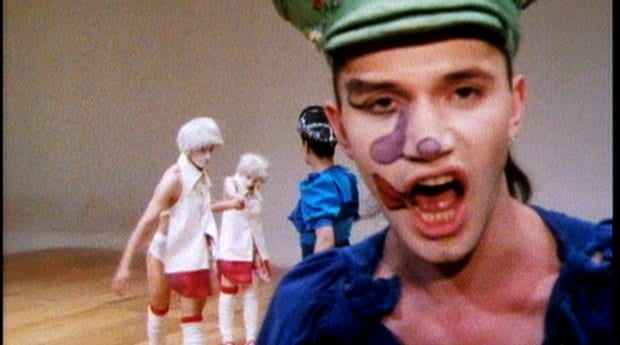It is entirely possible that you are unaware of the Charles Atlas-shaped blank space on your coffee table. Never fear: thanks to Prestel Publishing — purveyors of books on art, architecture and photography since 1924 — that space is filled.
Born in St Louis — and not to be confused with the fitness icon of the same name — Atlas arrived in London at the tail-end of the New Romantic scene, a time when a wild burst of creativity in art and fashion emerged out a selection of weekly London club nights. It made stars out of Boy George, Marilyn (George’s drag pal), and the late Steve Strange. Atlas eventually forged a friendship and creative partnership with Michael Clark, the controversial dance world it-boy, and Clark’s costume designer Leigh Bowery, the Australian performance artist and club legend.
Atlas gained recognition and respect from the underground club world ruled by Bowery and his freaky friends, as well as garnering some mainstream attention with his innovative approach to the filming of contemporary dance. He went on to pioneer the creation of the dance-film, creating many collaborations with Michael Clark’s company, including the era-defining documentary Hail the New Puritan, as well as his highly influential work with Merce Cunningham. He’s worked on numerous projects as designer and video artist with art legends like Marina Abramovi, musical acts like Antony and the Johnsons and fashion designer Marc Jacobs.
Prestel’s beautifully rendered coffee-table book represents the artist’s output across four decades and all types of media, from Atlas’s early experiments with filmmaking and cinematic collage in 1970, to the video installations he has been exploring in recent years. Atlas himself not only provides personal commentary on each individual work in the book, but he was also directly involved with the image selection and layout (the book’s cover even features round, mirrored dots, which bring to mind one of Bowery’s famous “spot” looks).
Atlas’s commitment to pushing boundaries in his ongoing exploration of queer sexuality and gender — including his work within the trans community — is well-deserving of the kind of documentation that Prestel has lovingly afforded him. His primary legacy may be the indelible contribution he made to the way that dance is recorded and documented on film, but his importance as an artist also lies in his engagement with many of the brightest lights of the queer avant-garde in 1980s London. For proof of this, one need look no further than Atlas’s excellent documentary The Legend of Leigh Bowery, which not only pays tribute to the utterly unique genius of Bowery but also presents a vision of a truly exciting moment in queer culture.
Indeed, anyone interested in the history of aesthetics in the latter days of the 20th century, or working in the field of image production today, owe it to themselves to discover Charles Atlas.

 Why you can trust Xtra
Why you can trust Xtra


